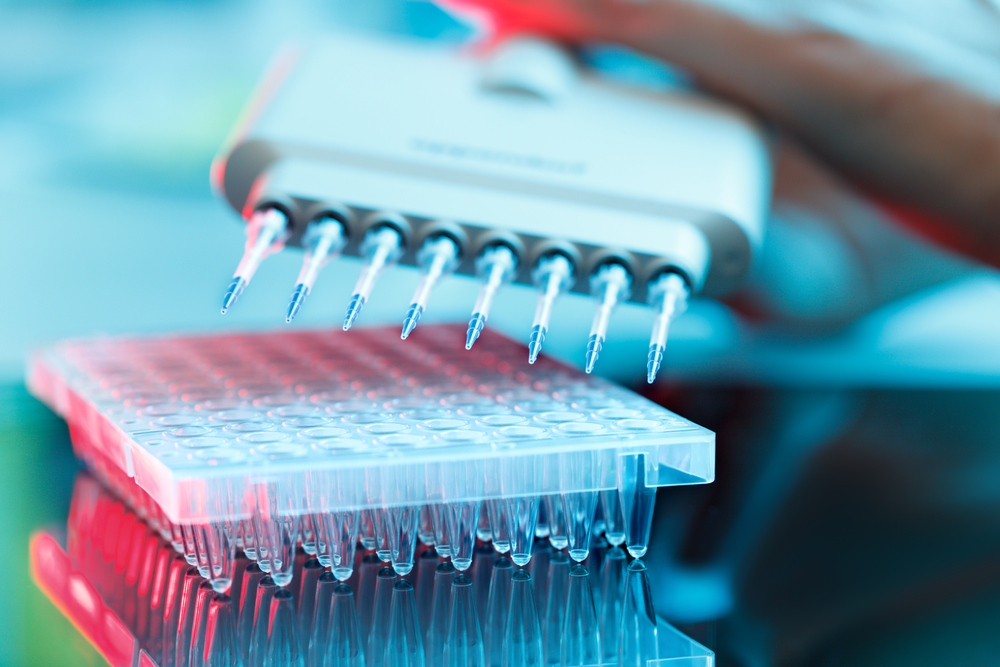Cancer Therapy Shows Potential for Treating ALS, Frontotemporal Dementia, Study Reports

An exploratory anti-cancer therapy may halt the characteristic toxic accumulation of TDP-43 in amyotrophic lateral sclerosis (ALS) and frontotemporal dementia (FTD), researchers suggest.
The preclinical study, “Poly(ADP-Ribose) Prevents Pathological Phase Separation of TDP-43 by Promoting Liquid Demixing and Stress Granule Localization,” was published in the journal Molecular Cell.
The accumulation of toxic aggregates of specific proteins in nerve cells — which eventually leads to nerve cell death — is a hallmark of neurodegenerative diseases.
In ALS and FTD — a common cause of dementia that can affect behavior, personality, language, and motor function — the main component of these toxic clumps is TDP-43.
TDP-43 is a DNA and RNA-binding protein that normally binds and stabilizes RNA — the intermediate molecule between DNA and proteins. While usually located in the nucleus of a cell (the central compartment where the DNA is located), TPD-43 can be abnormally found in clumps outside the nucleus in nerve cells of ALS and FTD patients.
The accumulation of TDP-43 aggregates in nerve cells was recently shown to disrupt energy and protein production, eventually leading to nerve cell death.
Outside the cell nucleus, TDP-43 can be located in stress granules, small transient clumps of proteins and RNA molecules formed when cells are under stress — a cellular strategy to minimize stress-related damage and promote cell survival. However, the presence of stress granules has been associated with neurodegenerative disorders.
The mechanisms behind the formation of these “toxic” stress granules and TDP-43 clumps are still poorly understood.
Researchers at the School of Arts and Sciences and the Perelman School of Medicine at the University of Pennsylvania have now taken a step forward in understanding how TPD-43 ends up in stress granules and how it forms the toxic aggregates seen in ALS and FTD.
Using mammalian cells grown in the lab, the team found that outside the nucleus, TDP-43 is accumulated in stress granules when bound to a molecule called PAR. While stress granules initially protect TDP-43 from disease-related structural changes leading to toxic clumps, long-term stress promotes the disintegration of these granules, leaving TDP-43 aggregates exposed to those toxic changes.
To evaluate whether the suppression of PAR could prevent the accumulation of TDP-43 in stress granules and future toxic clumps of TDP-43, the researchers suppressed PAR in fruit flies and cultured mammalian cells with higher-than-normal levels of TDP-43. The fruit fly is a model organism widely used to study neurological disorders.
The suppression of PAR in fruit flies was achieved using a genetic approach, while the mammalian cells were treated with PARP inhibitors, small molecules that suppress PAR production and that have been developed as a potential anti-cancer therapy.
The reduced levels of PAR lowered the accumulation of TDP-43 outside the nucleus in fruit flies and mammalian cells, and strongly prevented TDP-43-induced neurodegeneration in fruit flies.
These findings highlight the involvement of PAR in ALS and FTD and suggest PARP inhibitors as potential therapeutic strategies in patients with these neurodegenerative diseases.
“The PARP inhibitors we tested that antagonized … [the] accumulation of TDP-43 may one day be optimized as valuable therapeutics for brain diseases,” Edward Gomes, the study’s co-author, said in a press release.
“Given the lack of treatment options, we are excited by these experiments that help elucidate molecular events that could lead to new therapeutics,” said Nancy Bonini, PhD, the study’s senior author.






